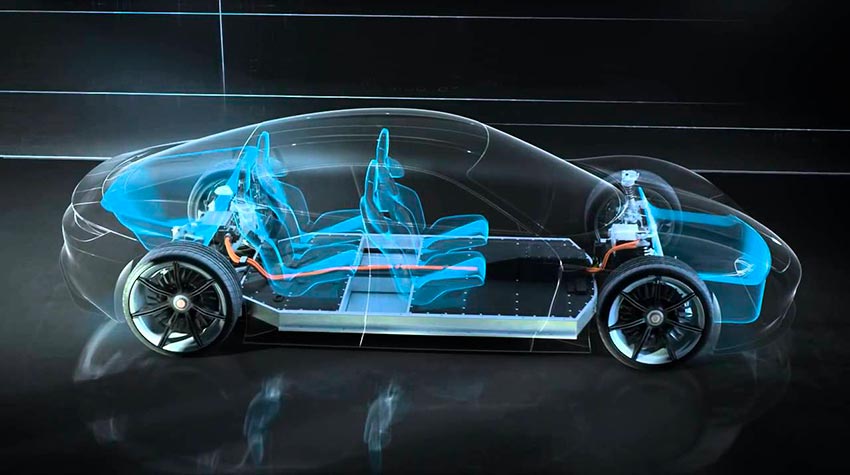By using clean energy instead of fossil fuel, the electric car is the most effective tool to meet the main objective of the Paris Agreement, such as limiting the increase in global warming to 2°C from its pre-industrial level. For this, the transcendental document indicates that greenhouse gas (GHG) emissions must be reduced until they are totally eliminated. As more electric cars are added to the planet’s traffic, global warming will be mitigated, as will climate change, since GHG emissions are largely due to automobile traffic. In addition, the electric car does not produce environmental or sonic pollution, which will eliminate the smoke or smog of large cities and the noise in populated places near highways. Therefore, the plug-in car is called to contribute to sustainable development and the concept of green cities. If we can replace traditional cars with electric cars, we will have won an important battle in pro of life on Earth.
An electric car is a vehicle powered by an engine that uses electrical energy stored in a rechargeable battery. It basically consists of an electric motor, a controller and a battery. When the car is turned on, the current passes from the battery to the controller, in charge of transferring the electrical energy to the motor, which transforms it into mechanical energy to move the car. The controller is in turn responsible for supplying power to the motor. The variable potentiometers are connected between the accelerator and the controller and show you how much energy to deliver according to the pressure the driver gives the accelerator. When the pedal is released the energy requirement is zero, and consequently the car stops. When the accelerator is pushed all the way in, it provides the maximum output to the car. An additional advantage is that their maintenance is more inexpensive than that of internal combustion engine vehicles.
The electric cars are almost identical to a conventional car in terms of its external appearance, which are differentiated just by no exhaust pipe. But, in their mechanics and operation, they are very different. The clear majority do not have a gearbox or clutches and start from zero revolutions. They also do not use spark plugs, injectors, gasoline filters and other parts. Electric cars have a high performance in the transformation of electric energy into mechanical energy, compared to the performance of gasoline-powered cars.
The battery packs, usually lithium-ion batteries, are under the vehicle and sometimes in the trunk. They are used, in addition to delivering power to the engine, for the operation of the windshield wipers and lights and other electrical outputs inside the car. A part of the engine and the operation of the plug-in car is quite like the internal combustion cars, such as air conditioning, brakes, transmission systems and airbags.
The electric car is the call to replace traditional cars and win the fight against climate change. However, according to the news we have at hand, we can see what we have called a “constellations collision”, a conflict between supporters of fossil fuels and those who fight against climate change. The future of the electric car seems unstoppable, as has been stated by almost all manufacturers and has been demonstrated by the growing production of electric units. We also must consider the attitude of many countries, prone with their projects and actions to overcome current patterns of energy consumption and move towards clean energy.
But, on the other hand, the news about innovative explorations and findings of large hydrocarbon deposits is not encouraging. There is also the danger of lifting prohibitions on protected areas, to extract gas or oil. However, the greatest threat is the practice of fracking or hydraulic fracturing, an unconventional technology used to release hydrocarbons embedded in rocks of very low porosity, in huge deposits at depths of up to three and more kilometers. Fracking is used to extract shale gas and shale oil from the subsoil. Both are equal to their conventional counterparts such as natural gas and oil. In the last decade, especially in the United States, the combined techniques of deep vertical-horizontal drilling and stimulation by fracking have evolved intensively, making oil and gas extraction a solution to the dependence on imported oil, promoting the burning of fossil fuels. There are also several dozens of countries that have reserves of shale gas and shale-oil under their soils. Some may be tempted to extract them, which would lead to flooding the oil market, quite the opposite of what was previously thought, based on the progressive depletion of conventional deposits. This, in turn, could lead to a significant drop in oil prices and jeopardize the viability of the electric car.
2020 is the year we must look at it. It will be when we can begin to clear the unknowns here presupposed, when the Paris Agreement comes into force. In this scenario, it will be known who is who, when going ahead with signed agreements and having to disburse the first one hundred billion dollars for the Green Climate Fund. At that moment, the contradictions between what is already agreed and what will be done will come to light. There is a lot of money at stake and, therefore, it is not difficult to anticipate that some players will not want to abandon their investments made in hydrocarbons. That is the constellations collision mentioned above, a thriller that we hope will end with a happy ending.
Sandor Alejandro Gerendas-Kiss







Leave A Comment